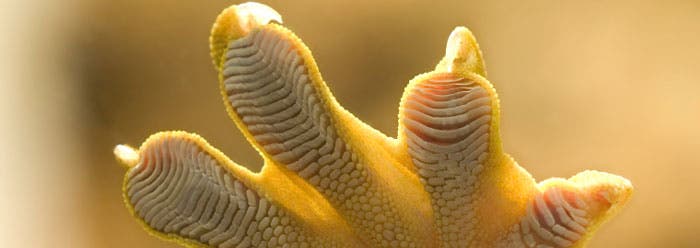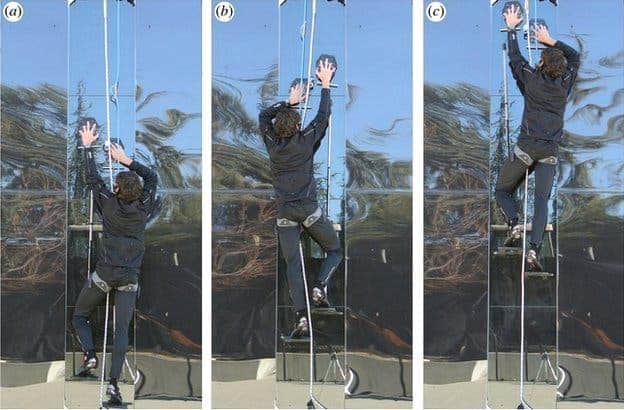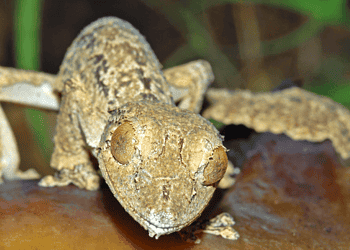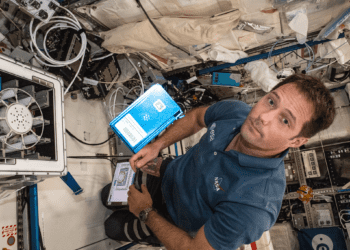Watch out, Spiderman! Stanford engineers recently demonstrated a pair of gecko-inspired hand pads strong enough to pull the weight of an adult man and to allow him to climb a wall.
Scaling walls like a gecko

At the center of the gecko’s clinging ability are its specialized pads, located on the reptile’s toes, comprised of various satae (bristle- or hair-like structures ) on the tip of which lie tiny structures called spatulae, each less than a micron wide. These allow attraction forces called van der Waals interactions to arise between the adhesive setae and the surface. A single spatulae shows very weak molecular forces, however when coupled together in thousands of thousands on the satae, the attraction becomes very strong.

Inspired by the gecko, Stanford researchers led by Mark Cutkosky designed, created and tested out various types of artificial adhesives that could copy the high surface area of the setae on a gecko’s feet. After many, many failed attempts, the team finally found the right mix: an adhesive system made from a silicone material called polydimethylsiloxane (PDMS) that is layered as microscopic wedge. The biggest challenge was making the pads have “controllable adhesion”, so they could easily be switched on or off simply by transferring weight on the adhesive. Ultimately, the researchers were able to scale their designs on hand-sized pads that helped a 70kg male human scale a smooth vertical surface.
[RELATED] Gecko sex in space, and why this is useful for science
The pads could prove useful in manipulating huge solar panels, displays or other massive objects without any help from suction power or chemical glues. Perhaps, they might be most useful in space where astronauts could cling to surfaces of the Internationals Space Station, telescopes or satellites. The pads were reported in a paper published in the journal Journal of the Royal Society Interface.






